With so many muzzle devices out there, it’s easy to get confused between flash suppressors, compensators, and muzzle brakes.
We’ll go through the differences between each in terms of design and performance.
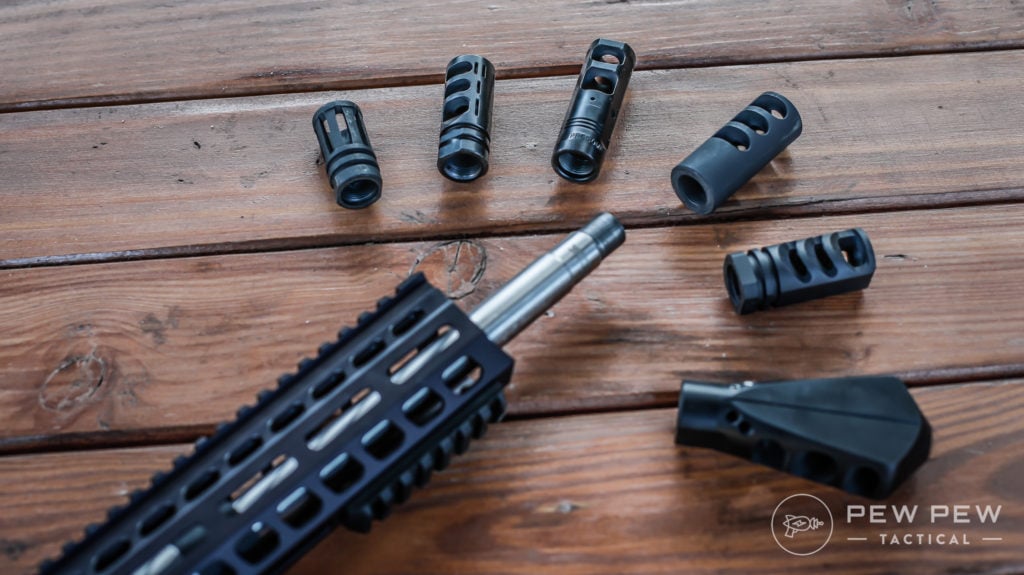
Flash Hiders
Flash hiders, or flash suppressors, are used to guard the shooter from visible flash.
This flash comes from unburned gunpowder and for the most part gets progressively worse as barrel length shortens (AR-15 pistols, we’re looking at you).
This is especially important in nighttime shooting to preserve night vision. A secondary perk is that it also minimizes the flash signature that others see.
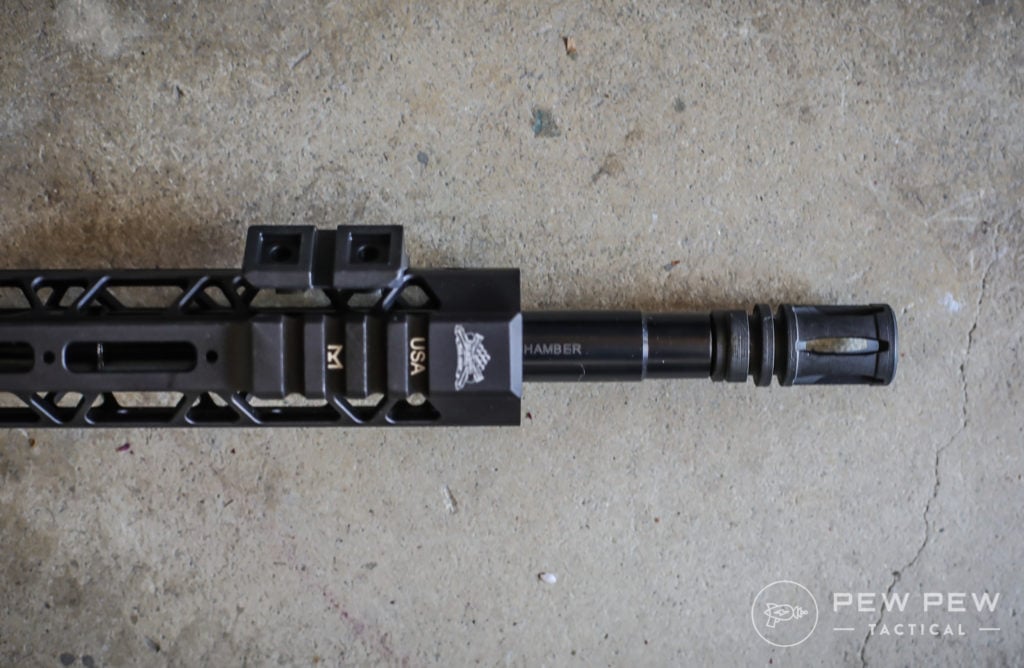
Be aware that some jurisdictions have laws against flash hiders and minimum overall barrel lengths.
Flash hiders have exits that are much larger than the diameter of the bullet. There are two main designs for flash hiders. The first is the 3 or 4 pronged variety.
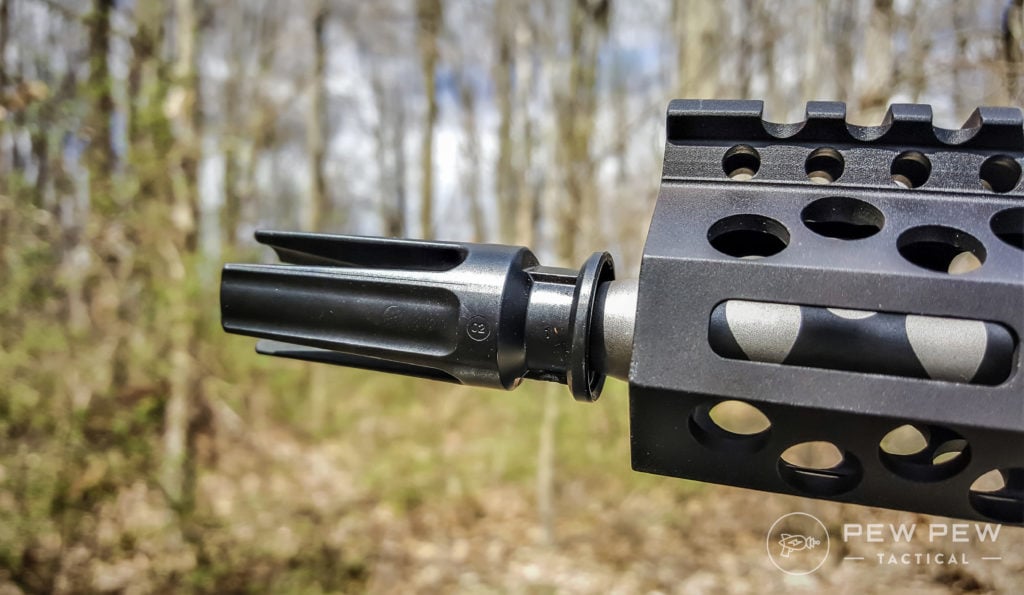
The second and standard equipment for US forces is the A2 birdcage design. Its prongs are contained out front so there’s less possibility of snagging.
It is a hybrid muzzle device with some compensator design features.
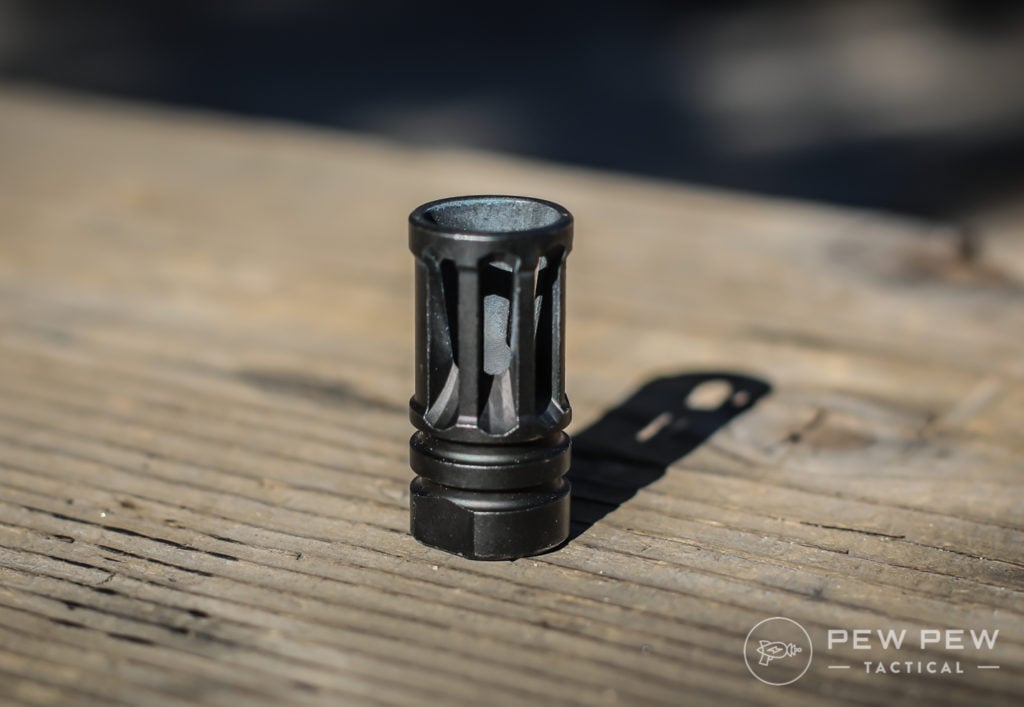
Compensator
Compensators are used to counter the vertical movement up of the barrel (muzzle flip).
It does this by venting the hot gases through openings on top so there’s a reaction force downwards.
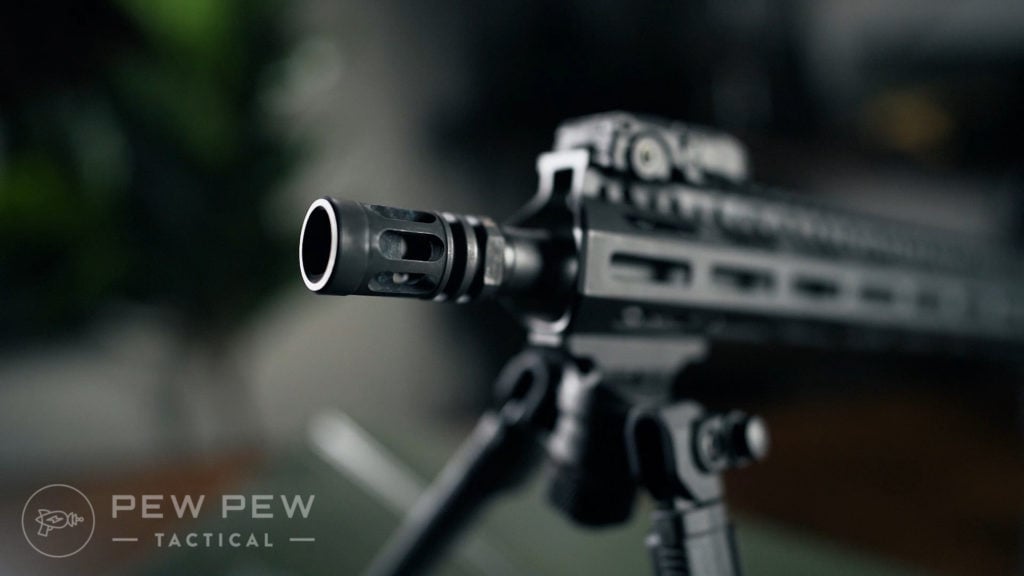
The A2 above has a solid base so the top vents act as a kind-of compensator while also minimizes dust being kicked up if shooting low to the ground.
We don’t know of any pure compensators with just holes on top. They usually have a mixture of muzzle brake in there.
While almost all compensators will also act as brakes, not all brakes act as compensators. Why? We don’t know, but that’s what the market wants!
Look for three big openings on each of the sides and a couple holes on top to minimize muzzle flip.
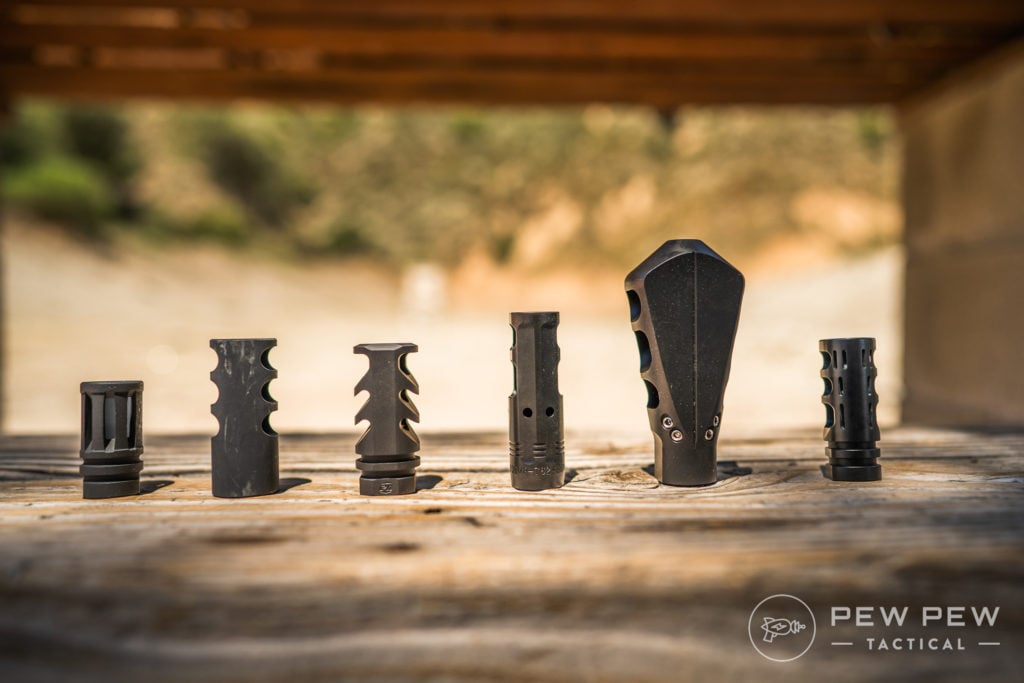
Muzzle Brake
Muzzle brakes help reduce the felt recoil by venting gases to the side. However, this makes it very loud and even forceful (with the pressure wave) for range bystanders or teammates to the side.
Muzzle brakes and compensators usually have exit areas that are roughly the same size as the bullet.
One of the best muzzle brakes out on the market is the above hybrid or Precision Armament’s Severe Duty.
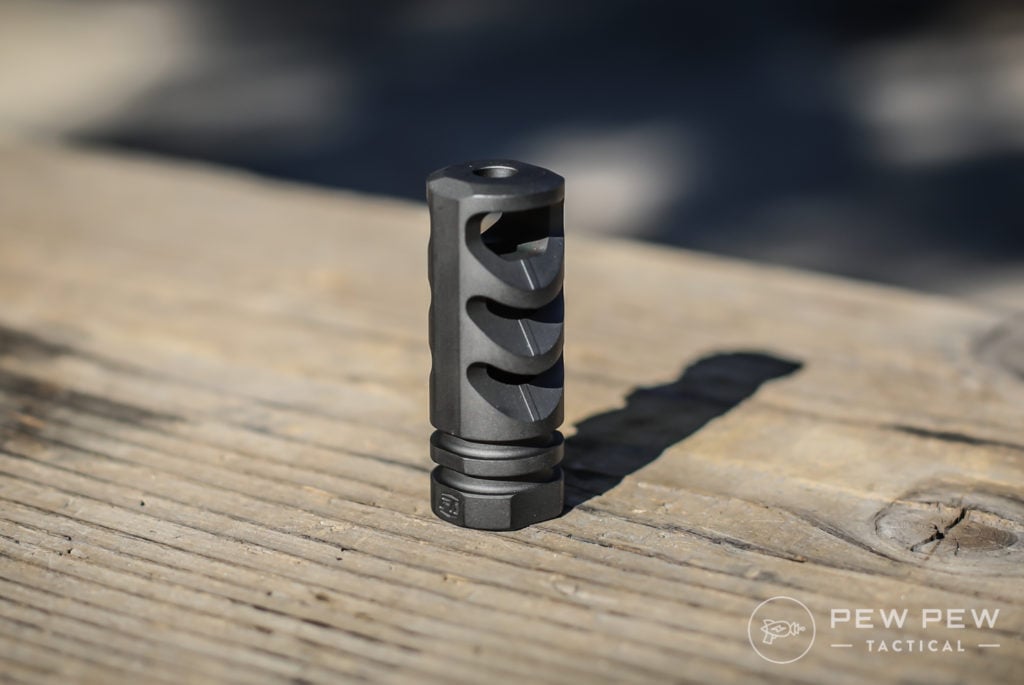
If you want to get most of the braking action, but not blast your friends into the next zip code — maybe take a look at the SureFire SOCOM brake and Warden comp!
Alternatively, if you’re looking for more ways to reduce recoil — we got you covered: How to Reduce AR-15 Recoil: Stance, Gas, Brakes, & BCGs!
Parting Shots
Choosing a muzzle device will depend on your intended use. If you’re going to be shooting at night, you’ll likely want a flash hider. Competition shooters may want a combination muzzle brake and compensator.
We’ll cover our recommendations for all price ranges in our next article.

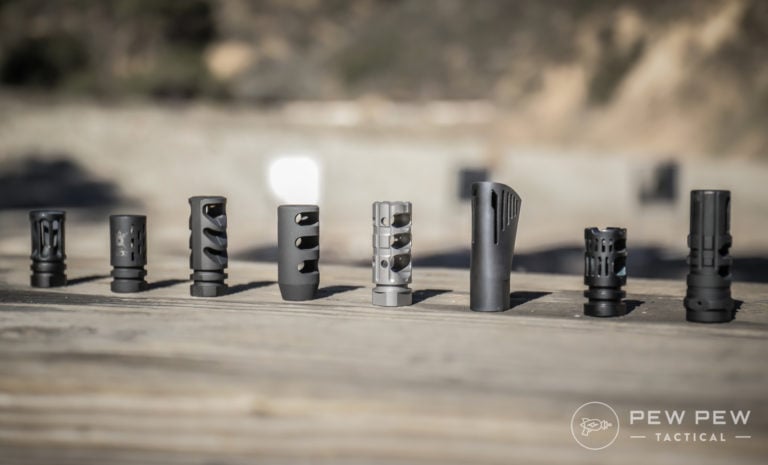







9 Leave a Reply
I appreciated it when you shared that a muzzle brake is used to reduce the felt recoil by venting gases to the side. My uncle just mentioned the other day that he is planning to find an accessory for his firearm in order to make it work more efficiently. I will suggest to him getting a muzzle brake for it from a reliable store.
for real
Eric
When I was Active Duty in the Military, I was taught/told that M-4s/M-16s/SAWs/M-60s/E-3s/M-14s/Etc., use Flash Suppressors that break up the Muzzle Flash/Flash Signature. For those on the receiving instead of seeing a fire ball, one sees "fingers" of the flame/flash.
It will do nothing to hide the Flash.
It does make it harder to pinpoint exactly where the shooter is/was and the muzzle flash originated.
You see this effect in action movies.
Flash Hiders do just that and reduce/hide the signature.
At least that is what I was taught/told.
FYI the original AR-15/M-16 had a 3 prong flash suppressor. You have stated you don't like the A2 Birdcage.
The AK-47 has or use to have, a "slant cut" type muzzle brake/flash suppressor.....It worked and was effective or the Soviets/Russians would not have kept it all these years.
The holes in the Muzzle Brake on my .460 Weatherby Magnum are nowhere near the size of the bullet nor were the ones on a 7mm Rem Mag I once owned. Of course they are older firearms with older designed muzzle brakes.
Tip on shooting any firearm with a lot of recoil: a proper and comfortable well placed stance, proper grip and hold and secure shoulder placement, "hang on" to the rifle, and lean into it. .... squeeze the trigger and ride it out. Don't fight the recoil. Let the recoil roll though and ride it out and let the weapon settle back down, get your site picture back and repeat.
You don't get something for nothing goes without saying! How do you ride a bucking horse? You hang on and ride it out...if you fight it....expect to get thrown and get hurt.....Recoil does not have to hurt...
Shut up, Meg
ya like for sure even
What about muzzle shrouds?
Don't the 1921 Thompsons famously have their compensators with only holes(or cuts) on top?
So what category do KAK flash cans and Noveske Flaming Pigs fall under? I've read many times it is considered a flash hider because of the diameter of the exit bore, but KAK specifically states on their product site that it does not reduce recoil, muzzle rise or flash signature, I'm having a hard time figuring out if it is okay to put this on my featureless AR.
It's one of those things where I'd rather be safe than sorry. If there's some controversy about it I would just skip it. Just googling a little there's big places that sell it under "noveske flash hider kx3 pig."